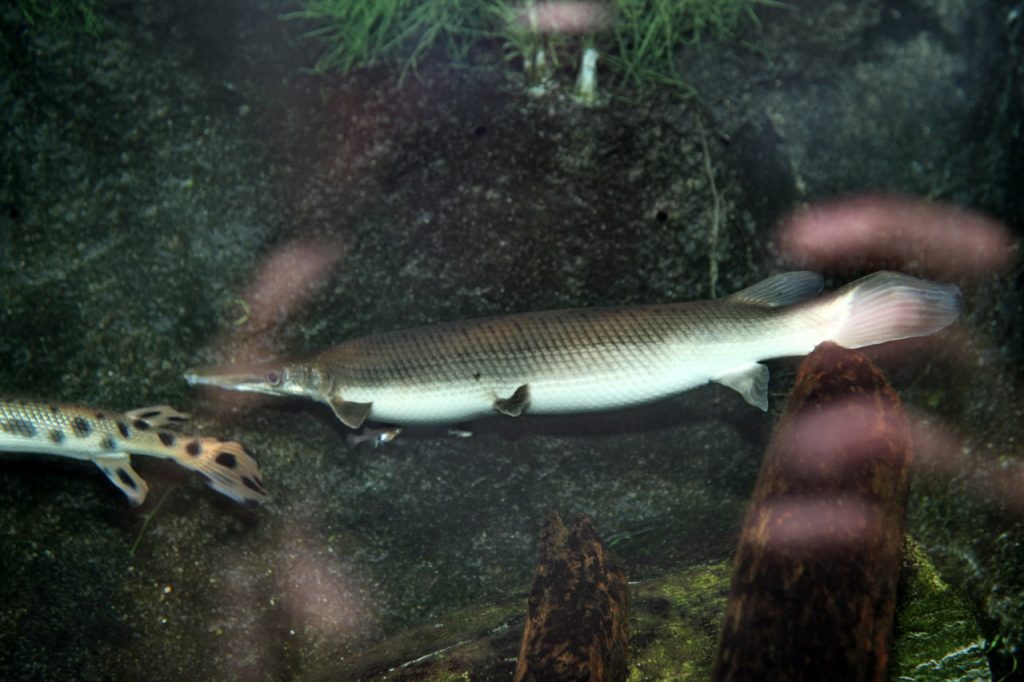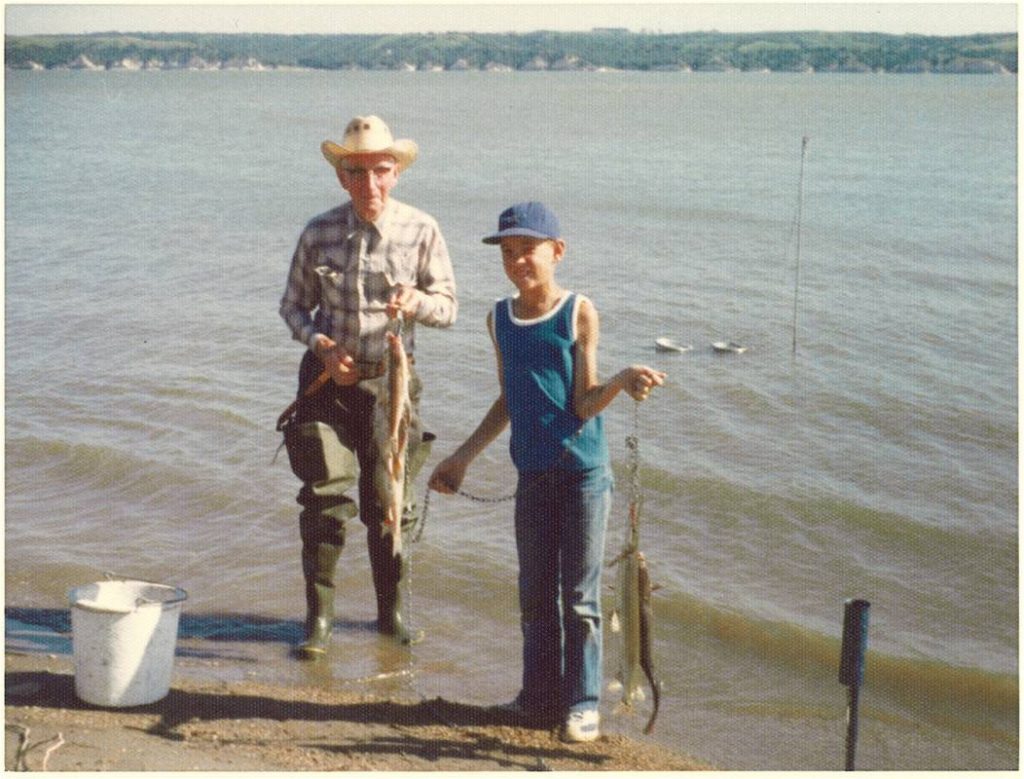I have been hearing some “chatter” recently on the ole inter-webby about Gar. Gar tend to have the reputation as being an ugly, toothy, vicious, despised predator. There are a lot of misconceptions about Gar; let me talk about a few. . . .
Alligator Gar
Most of the current talk about Gar comes from some news stories that have circulated recently about Alligator Gar. Even though all Gar have a relatively narrow snout full of sharp teeth, NOT ALL GAR ARE ALLIGATOR GAR. Alligator Gar are a distinct species of Gar, Atractosteus spatula. They are the largest species of Gar and can reach hundreds of pounds. Alligator Gar are found nowhere near Nebraska. Pointy-headed reference books that I have sitting on my desk note that Alligator Gar have not been documented any closer to Nebraska than southeast Missouri and even there they are found mostly in the Mississippi River and rarely north of the confluence with the Missouri. Alligator Gar are a southern species.
Recently, Illinois has announced that they are trying to re-establish Alligator Gar in rivers in the southern part of their state. Subsequent media reports have generated most of the current interest in Gar. I will not pretend that I know what pointy-headed fish biologists in Illinois are doing, but from what I have read, Alligator Gar were native to waters in southern Illinois, and for one reason or another, disappeared. They are trying to re-establish some of those populations.
In the process someone made a comment that Alligator Gar being large predators could eat Asian Carp. Well, some reporter picked that up, and many stories I have seen have had that headline. The L.A. Times even ran a story with the headline “How to Combat Asian Carp? Get an Alligator Gar”. I am doubting that some AP reporter nor their editor knew the difference between an Alligator Gar and a fence post, but once someone said something about a predator that will eat other fish, including Asian Carp, well, there is a headline that will get attention. The real intention was to re-establish a native fish to Illinois waters it once inhabited, and if those predators eat some Asian Carp, great, “eat all you want”. But, now the stories that are circulating are all about Alligator Gar controlling Asian Carp and that was never the intent, nor will be the result.
Predators
Gar are predators, no doubt about it. They also do some scavenging of things that recently died. A mouth full of sharp teeth is meant for one thing–eating other critters. However, compared to Bass, Walleye, or Muskies, Gar are relatively inefficient as predators. Gar mouths are not designed to open as widely as the mouths of our more-beloved predator fish. Instead of opening their jaws and flaring their gill covers to inhale prey, Gar snap to capture prey items in their teeth. Watching a Gar feed is interesting as they typically approach very close to a prey item, get alongside it and then strike to the side to entrap unsuspecting prey in their jaws. Here is a good example:
Can the predatory Gar have an impact on the populations of fish they might prey upon? Sure, but if other predator fish are present, they likely have more impact than Gar. But, in some waters Gar get blamed for the demise of some fish species preferred by anglers. The Gar are toothy, ugly, convenient scapegoats and have caught a lot of unnecessary persecution because of it.
Gulpers
At times, usually in seasonal waters connected to large rivers, a person can find isolated pools containing nothing but Gar. When anglers stumble onto this, usually in the summer, they conclude that is proof that the Gar ate everything else. What in fact happened may not have been a predator eating itself out of house and home, but something else interesting about Gar. Yes, Gar can “breathe” with their gills to obtain oxygen, but they also can gulp air at the surface and then exchange oxygen into their blood through their swim bladder. Seasonal waters that may have been full of fish after a spring rise can become oxygen-deficient later in the summer. Fish that can only obtain oxygen from the water may perish, while Gar just keep gulping and living.
Native Species
Once again, Alligator Gar are not found in Nebraska and there is no documentation that they have ever been found in Nebraska. There are two species of Gar that are native to Nebraska, Shortnose and Longnose Gar, and they are common especially in the Missouri River and in tributaries to the Missouri.


In recent years, there have been a handful of Gar caught in Nebraska waters that have been identified as Spotted Gar. Spotted Gar are another species of Gar found in waters to the south and east of Nebraska. We have believed that some of those Spotted Gar may have been expanding into Nebraska waters, but it appears we were wrong about that. The new Fishes of Nebraska book has noted that Shortnose and Longnose Gar can hybridize and the additional spotting on those fish have led to mistaken identifications as Spotted Gar. As of right now, we will not be certifying any more Spotted Gar as state records.
Personal Notes
Growing up, my family spent a couple of summer vacations traveling Nebraska camping and fishing. One or more sets of Grandparents accompanied us on those trips. I will never forget the first visit for all of us to Lewis & Clark Reservoir in northeast Nebraska. That was the first time any of us had fished any Missouri River waters. My Gramps Roth caught a couple of Gar and of course figured he would clean those fish so we could find out how they tasted. As I remember, Gramps gave up trying to clean a Gar after he broke the blade off of his fillet knife. The scales on Gar are like armor plating.

Tin Snips
I am not going to tell you that I regularly eat Gar. I do not. But, I have been told that they are excellent on the table if you can just get to the meat. The secret is tin snips! As my Gramps found out, a knife is not enough, but if you use a pair of tin snips to get through the skin and scales, you can clean a gar similar to any other fish and you might just find out that they are really good eating!
Oh, if you are inclined to eat fish eggs, you might want to skip Gar eggs. They are toxic.
Know and Appreciate
Like many things in life, a lack of understanding and downright misconceptions result in a lack of appreciation and in some cases even hatred. If you learn something about the Gar that inhabit some of our Nebraska waters, you might come to appreciate them and even set out to catch a few. With bony snouts and sharp teeth, Gar are not easy to hook, and some specialized fishing techniques are needed. For example, sections of frayed nylon rope that will entangle in a Gar’s teeth will work better than hooks, but Gar are usually willing to bite. If you want to learn more, the Gar Anglers Sporting Society has all the information, check it out!
The post Gar appeared first on NEBRASKALand Magazine.















